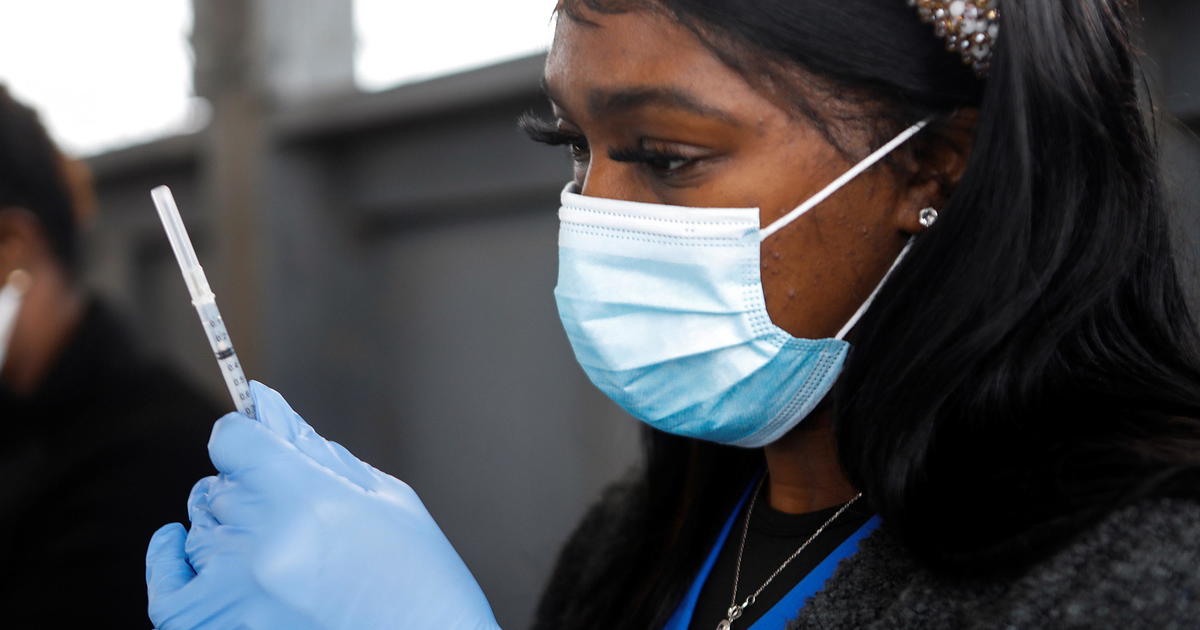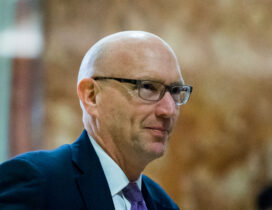
As Florida scrambles to vaccinate residents of the state against COVID-19, a key determinant in whether people are able to get a shot is whether they live in an area that is predominantly White and wealthy. One factor seemingly not playing much of a role: the number of COVID-19 cases in that area.
In Florida and other states, roughly a dozen of which have released vaccination data by county, evidence increasingly suggests that Black Americans are getting inoculated at far lower rates than White segments of the population.
Florida was the first state in the U.S. to open vaccines to any resident over 65. Experts told CBS MoneyWatch that has likely contributed to the racial disparities in administering the coronavirus vaccine.
“We know that African Americans tend to have more chronic illnesses and to age biologically faster than Whites,” said Dr. Lisa Cooper, director of the Johns Hopkins Center for Health Equity and a 2007 MacArthur “Genius Grant” winner for her work on racial and ethnic barriers in health care. “If you say, ‘You can have the vaccine at 65 as long as you live to 65, then I think it can lead to unintentional inequities.”
CBS MoneyWatch took a deep dive into Florida’s vaccine rollout, comparing vaccinations rates with demographics on income and race across the state’s 67 counties. Here are our key findings:
- As of February 7, residents of Florida’s top 10 counties with the highest percentage of White residents were 80% more likely to have received at least one shot of the COVID-19 vaccine than those who live in top 10 counties where non-Hispanic Whites make up the smallest percentage of the total population.
- Residents of Florida’s 10 counties with the highest incomes had a vaccination rate of 9% — that’s nearly double the 5% vaccination rate of people living in the state’s 10 poorest counties. Statewide, the first-dose vaccination rate for Floridians is 6%.
- Publix, the supermarket chain, is the main pharmacy provider of vaccines in Florida. In Broward County — which has a population of nearly 2 million and is among the state’s districts with the highest percentage of Black residents — not one of the more than 50 Publix locations in the county has begun to provide COVID-19 vaccinations. Boca Raton — a wealthier and whiter city in Palm Beach County, with one-twentieth the population of Broward — has 10 Publix locations offering the vaccine.
- In looking at where the vaccine has been distributed to date in Florida, race and income appear to be a bigger determinant than coronavirus outbreaks. For instance, Osceola County, in central Florida just south of Orlando, has had nearly 35,000 recorded cases of COVID-19 — an infection rate of about 1 in 10. It is also one of the most diverse counties in the state. Yet only about 14,000 residents, or 4%, have received at least one dose of the vaccine, one of the lowest vaccination rates in the state.
- By contrast, Sumter County, just north of Orlando, has had 7,500 cases of COVID-19 in a population of 125,000, or 1 in 16. Yet 15% of the county’s population, or nearly 19,000 people, have gotten at least one vaccine shot. That’s the highest vaccination rate of any county in the state. Sumter County, home to the retirement community The Villages, is also one the state’s whitest counties.
Cody McCloud, the press secretary for Florida Governor Ron DeSantis, declined to comment on why there has been a delay in opening up vaccine locations in Broward County. In Palm Beach County, McCloud said there were 67 Publix locations offering the vaccine and that 90% of the county’s seniors lived within three miles of one of those locations. He also said the governor plans to open up hundreds more vaccine distribution sites within the next few days.
“The Division of Emergency Management and the Florida Department of Health continue to identify places of worship and other locations in underserved communities where the COVID-19 vaccine may be administered,” McCloud said in an email to CBS MoneyWatch.
Wealth, race “bigger factors” than hesitancy
CBS MoneyWatch showed its findings to a number of experts who have been studying vaccine distribution around the U.S. All said that while there appears to be a higher degree of vaccine hesitancy among Blacks, that alone can’t explain the gap in vaccination rates between Black and White residents of Florida.
“There are a number of reasons certain counties have had more vaccinations than others,” said Emma Boswell Dean, an assistant professor of health management and policy at University of Miami’s Herbert Business School. “Vaccination hesitancy has played a role, but the wealth ingredient and the race ingredient have been bigger factors.”
Palm Beach County, which is home to former President Donald Trump, illustrates the problems with Florida’s vaccine rollout. The county, which sits about an hour’s drive north of Miami, stretches from the Atlantic Ocean to Lake Okeechobee in the middle of the state. Florida struck a deal with Publix in January to be the sole pharmacy provider of vaccines in the county — a fruitful arrangement for the wealthy communities on the county’s eastern edge with many Publix locations.
A Publix spokesperson said the governor’s office was responsible for selecting where the vaccine would be distributed.
Mar-A-Lago, Trump’s high-end resort, which now doubles as his personal residence, is within about five miles of six different Publix stores that are distributing the vaccine. For Lake Okeechobee’s Belle Glade — a city of nearly 18,000 where 60% of the residents identify as Black and the average annual household income is just under $25,000 — the closest Publix is 27 miles away. It is the only Publix offering the vaccine within 30 miles of the city.
Belle Glade Mayor Steve Wilson said vaccine hesitancy among residents of the city was initially the largest problem that had to be overcome in distributing the vaccine locally. But as attitudes change, Wilson said access is becoming the larger obstacle. Last week, after Wilson and two other local mayors wrote a letter to the governor’s office, Florida opened a single vaccination site in neighboring Pahokee, which is 10 miles away from Belle Glade.
“We wrote the governor a letter because we were upset; but we are moving in the right direction now,” Wilson told CBS MoneyWatch. “As long as they don’t have to drive 30 or 40 miles, there is no excuse to not get the vaccine. That was just ridiculous.”
Still, Black residents are far behind in vaccination rates in Palm Beach County. As of February 10, just 4,310 of the county’s roughly 270,000 Black residents had gotten their first dose of the vaccine. That translates to a vaccination rate of 1.6%. For the county’s White residents, 78,000 out of about 1.1 million have gotten their first dose — a vaccination rate of nearly 7%.
The upshot: If you are White, live in Palm Beach County and are eligible for a shot, you are four times more likely to be vaccinated than someone in that same county who is Black.
Race disparities “unintended, but they’re there”
On Thursday, health news website STAT released a study that showed that wealthier Americans in many parts of the U.S. have been vaccinated at higher rates than lower-income populations. Florida was among the four states STAT found that had the highest gap in vaccination rates between rich and poor. The three others were Connecticut, California and New Jersey.
In the past month, more states have moved to offer the vaccine to all residents over 65, regardless of chronic illness or other risk factors. Cooper, the health fairness expert, said that while she understands the desire to make vaccine eligibility as simple as possible, such a strategy ignores the fact that Black Americans and Hispanic Americans make up a larger share of the nation’s frontline workers, who are more vulnerable to the virus.
“Including things like having a chronic condition or whether you are a frontline worker would help to get more equity, rather than just age,” Cooper said. “The inequities are not intended, but they’re there nonetheless. We’ve seen it.”

